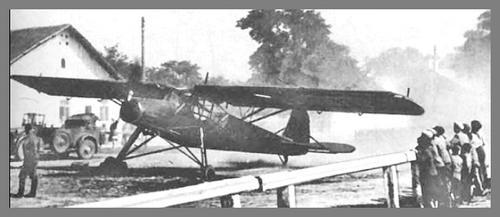Friesler Fi-156 Storch Plane in Eastern Village On a dusty village street, local boys check out an Axis Storch aircracft, famous for its short landings and take-offs. The national identity of this particular German-made liason plane may be Hungarian but it's not possible to establish with certainty.

|
|
On May 8 1945 II/...
|

|
|
Junkers Ju-86 Bomber...
|

|
|
Dongó (Wasp)...
|

|
|
Regent Horthy's Ju-...
|

|
|
Ju-87 Stuka in RHAF...
|

|
|
Caproni Ca-135...
|

|
|
Messerschmitt Me-109...
|

|
|
Storch Liaison Plane...
|

|
|
Friesler Fi-156...
|

